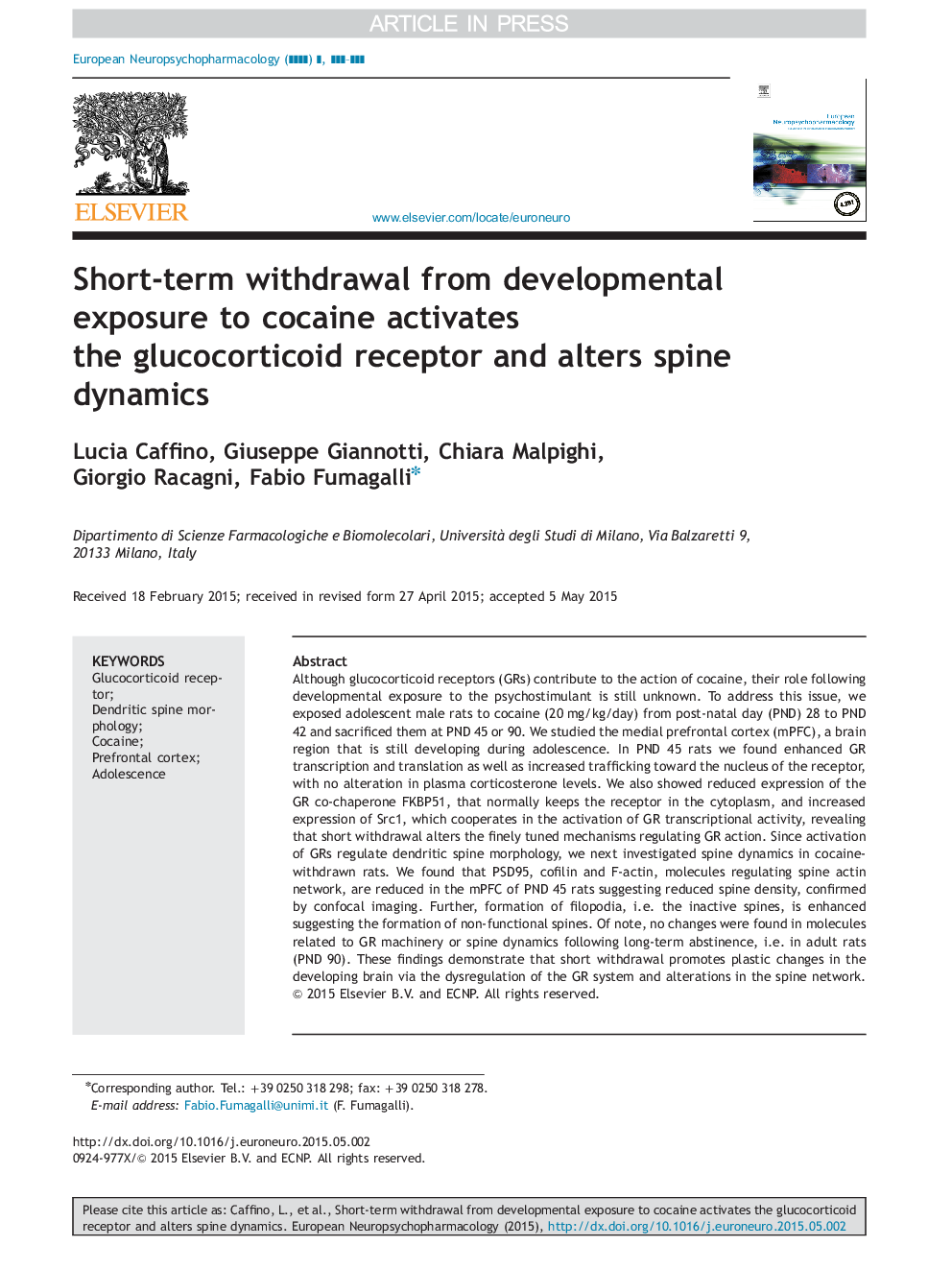| Article ID | Journal | Published Year | Pages | File Type |
|---|---|---|---|---|
| 10298644 | European Neuropsychopharmacology | 2015 | 10 Pages |
Abstract
Although glucocorticoid receptors (GRs) contribute to the action of cocaine, their role following developmental exposure to the psychostimulant is still unknown. To address this issue, we exposed adolescent male rats to cocaine (20Â mg/kg/day) from post-natal day (PND) 28 to PND 42 and sacrificed them at PND 45 or 90. We studied the medial prefrontal cortex (mPFC), a brain region that is still developing during adolescence. In PND 45 rats we found enhanced GR transcription and translation as well as increased trafficking toward the nucleus of the receptor, with no alteration in plasma corticosterone levels. We also showed reduced expression of the GR co-chaperone FKBP51, that normally keeps the receptor in the cytoplasm, and increased expression of Src1, which cooperates in the activation of GR transcriptional activity, revealing that short withdrawal alters the finely tuned mechanisms regulating GR action. Since activation of GRs regulate dendritic spine morphology, we next investigated spine dynamics in cocaine-withdrawn rats. We found that PSD95, cofilin and F-actin, molecules regulating spine actin network, are reduced in the mPFC of PND 45 rats suggesting reduced spine density, confirmed by confocal imaging. Further, formation of filopodia, i.e. the inactive spines, is enhanced suggesting the formation of non-functional spines. Of note, no changes were found in molecules related to GR machinery or spine dynamics following long-term abstinence, i.e. in adult rats (PND 90). These findings demonstrate that short withdrawal promotes plastic changes in the developing brain via the dysregulation of the GR system and alterations in the spine network.
Related Topics
Life Sciences
Neuroscience
Biological Psychiatry
Authors
Lucia Caffino, Giuseppe Giannotti, Chiara Malpighi, Giorgio Racagni, Fabio Fumagalli,
